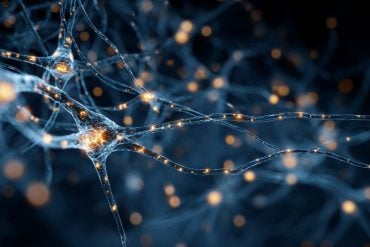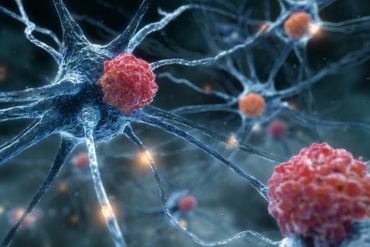Summary: Researchers have discovered a new genetic syndrome caused by a mutation in the SPAG9 gene that affects both neurodevelopment and neurodegeneration. The study identified three siblings with intellectual disability, speech delays, and progressive cognitive decline, linking the mutation to disruptions in brain structure and function.
Neuroimaging revealed abnormalities such as microcephaly, hippocampal malrotation, and cerebral atrophy. This research not only deepens our understanding of how genetic mutations impact brain health but also opens potential avenues for future treatments targeting both developmental and degenerative brain conditions.
Key Facts:
- A SPAG9 gene mutation causes both developmental and neurodegenerative effects.
- The syndrome presents with intellectual disability, speech delays, and cognitive decline.
- Neuroimaging showed brain abnormalities, including microcephaly and atrophy.
Source: Genomic Press
In a landmark discovery, researchers from the University of Antioquia have identified a new genetic syndrome that bridges the gap between neurodevelopmental disorders and neurodegenerative diseases.
The peer-reviewed study, published in Genomic Psychiatry, details a homozygous mutation in the SPAG9 gene that leads to a complex neurological phenotype characterized by intellectual disability, speech delays, and progressive cognitive decline.
Dr. Natalia Acosta-Baena, the study’s lead author, explains, “This discovery is significant because it provides a unique window into how a single genetic alteration can affect both brain development and long-term neurological health. It’s a rare opportunity to study the intersection of these two critical areas of neuroscience.”
The research team followed a Colombian family for over a decade, observing three siblings affected by the syndrome. Their comprehensive approach included genetic analysis, neuroimaging, and long-term clinical observation, providing a rich dataset that offers insights into the syndrome’s progression over time.
Key findings of the study include:
1. Identification of a homozygous deletion in the SPAG9 gene (c.2742del, p.Tyr914Ter) as the cause of the syndrome.
2. Detailed clinical characterization of the affected individuals, revealing a spectrum of symptoms including intellectual disability, cataracts, and cerebellar signs.
3. Evidence of progressive cognitive decline, suggesting a neurodegenerative component to the syndrome.
4. Neuroimaging results showing heterogeneous brain abnormalities, including microcephaly, hippocampal malrotation, changes in corpus callosum structure, iron deposition, and cerebral and cerebellar atrophy.
Dr. Carlos Andrés Villegas-Lanau, senior author of the study, highlights the broader implications of their findings: “This syndrome provides a unique model for studying how disruptions in cellular transport mechanisms can lead to both developmental and degenerative brain conditions. It could have far-reaching implications for our understanding of more common neurological disorders.”
The SPAG9 gene, previously unstudied in the context of brain disorders, is known to play a crucial role in cellular transport processes. The researchers hypothesize that the mutation disrupts the retrograde axonal transport system, a critical mechanism for maintaining neuronal health and function.
“Our findings suggest that SPAG9 is essential for normal brain development and long-term neuronal survival,” adds Dr. Acosta-Baena.
“This could open new avenues for therapeutic interventions not just for this rare syndrome, but potentially for a broader range of neurological conditions.”
The study’s long-term follow-up of affected individuals provides valuable insights into the natural history of the syndrome, showing how symptoms evolve from childhood into adulthood. This longitudinal perspective is rare in genetic studies and offers a unique opportunity to understand the lifelong impact of the mutation.
The research team emphasizes the need for further studies to fully elucidate the mechanisms by which SPAG9 mutation leads to neurological dysfunction. They are currently exploring potential therapeutic approaches based on their findings.
About this genetics, neurodevelopment, and neurodegeneration research news
Author: Ma-Li Wong
Source: Genomic Press
Contact: Ma-Li Wong – Genomic Press
Image: The image is credited to Neuroscience News
Original Research: Open access.
“A novel neurodevelopmental-neurodegenerative syndrome that cosegregates with a homozygous SPAG9/JIP4 stop-codon deletion” by Carlos Andrés Villegas-Lanau et al. Genomic Psychiatry







